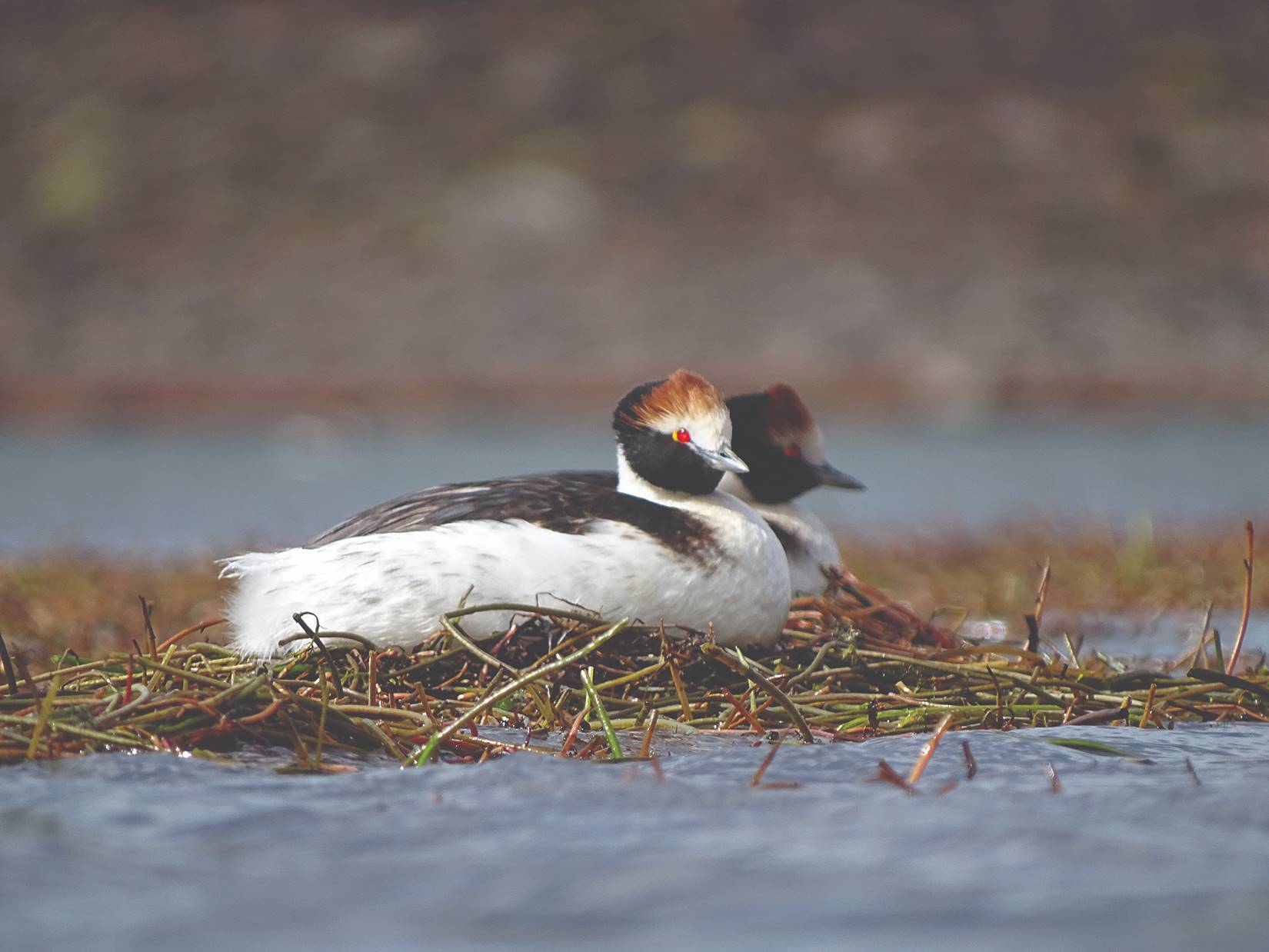
10 bird species that need our help now
Hooded Grebe
Where it lives: Patagonia
Estimated population: 750
Not discovered until 1974, the Hooded Grebe nests on high-elevation lakes near the southern tip of Argentina, where it performs elaborate courtship displays reminiscent of some of its North American cousins.
“It’s an extremely handsome bird, very charismatic,” says Ignacio “Kini” Roesler, conservation director for Aves Argentinas and a researcher at University of Buenos Aires, who has been studying the species for the past decade. He especially enjoys visiting the bird’s habitat, saying, “The highland plateaus are such an amazing place, with no trace of human civilization for miles around.”
Unfortunately, the grebe’s isolation hasn’t prevented it from being hit hard by human activity. The population has plunged from over 5,000 in the 1980s to 750 today. Invasive species are the main culprit, particularly American mink, which can wipe out half a breeding colony in one fell swoop. Stocked rainbow trout, meanwhile, devour algae-controlling invertebrates, thereby causing algae blooms that prevent the growth of a water plant the grebes need for nesting.
Intensive efforts to control trout and mink (along with predatory Kelp Gulls, which arrive on the scene following human detritus) have succeeded in momentarily stabilizing the Hooded Grebe population. Now, however, the bird faces a new threat: the construction of two hydroelectric dams that will alter the ecology of its main wintering site on Argentina’s Atlantic coast. Climate change could deal an added blow, conservationists say, lowering water levels and increasing wind speeds on its breeding grounds.
Where it lives: Patagonia
Estimated population: 750
Not discovered until 1974, the Hooded Grebe nests on high-elevation lakes near the southern tip of Argentina, where it performs elaborate courtship displays reminiscent of some of its North American cousins.
“It’s an extremely handsome bird, very charismatic,” says Ignacio “Kini” Roesler, conservation director for Aves Argentinas and a researcher at University of Buenos Aires, who has been studying the species for the past decade. He especially enjoys visiting the bird’s habitat, saying, “The highland plateaus are such an amazing place, with no trace of human civilization for miles around.”
Unfortunately, the grebe’s isolation hasn’t prevented it from being hit hard by human activity. The population has plunged from over 5,000 in the 1980s to 750 today. Invasive species are the main culprit, particularly American mink, which can wipe out half a breeding colony in one fell swoop. Stocked rainbow trout, meanwhile, devour algae-controlling invertebrates, thereby causing algae blooms that prevent the growth of a water plant the grebes need for nesting.
Intensive efforts to control trout and mink (along with predatory Kelp Gulls, which arrive on the scene following human detritus) have succeeded in momentarily stabilizing the Hooded Grebe population. Now, however, the bird faces a new threat: the construction of two hydroelectric dams that will alter the ecology of its main wintering site on Argentina’s Atlantic coast. Climate change could deal an added blow, conservationists say, lowering water levels and increasing wind speeds on its breeding grounds.
Advertisements
21 February 2022
Advertisements



